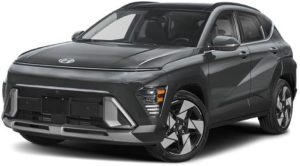Assessment of Working Capital including Exercise?
Introduction: For gradual development of Trade & Commerce of a country, availability of financial requirement is very important to the Entrepreneur undertaking manufacturing unit or trading unit.
Financial requirements of a Business Unit can broadly be classified into Two categories , which are —–
- Long Term Requirement —— can be met availing Term Loan.
- Short Term Requirement —– is met availing Working Capital Loan.
Meaning of Working Capital:
The amount required by a unit for carrying on its day to day operation is known as Working Capital.
Generally, Working Capital required for the following purposes:
- To purchase Raw Materials for production of finished goods.
- To meet expenses required for production, such as wages, Factory maintenance, etc.
- The amount needed for maintenance of Office and Sales Outlets, etc.
- To meet expenses required for production, such as wages, Factory maintenance, etc.
The amount needed for collection of Sale proceeds of finished goods, etc.
Stages of using Working Capital:
- Purchasing of Raw Materials and its safe storing.
- Sending of Raw Materials to the factory for production.
- Work in Progress/Process.
- Warehousing of the finished goods.
- Distribution of finished goods to sales outlets.
- Marketing of goods for selling and
- Collection of Sales Proceeds.
All these functions are required to do/maintain continuously, since running a production unit or any Trading Unit is a continuous process.
Existence of Working Capital in Books of Accounts:
Current Assets of the Balance Sheet of the Entrepreneur represents the finance involved for day to day operation of a unit.
+ In other words, Working Capital means total Current Assets it has to hold.
The level of holding Current Assets depends on following factors:
- Estimation of fund required to run the unit uninterruptedly and smoothly.
- Source of estimated fund — which are generally accommodated as under:
Source of estimated fund:
Estimated Fund requirement are generally met from the following means:
- Own contribution/Participation.
- Sundry Creditors (Supplier’s Credit).
- Outside Borrowing.
- Bank’s Borrowing.
All these items represent as Current Liabilities in Books of Accounts of the Customer.
Total Current Assets represent Gross Working Capital.
Total Current Assets less Total Current Liabilities is net Working Capital.
From Banker’s point of view, Net Working Capital is considered as requirement of Working Capital.
Working Capital Cycle:
The different stages of Production or Trading in between the feeding of raw materials in Business through purchasing by cash and final realization its sales proceeds in the form of Cash.
The stages are –
- Raw material holding period. (Average period the raw materials are held in Stock.)
- Stock in Process or Wok in Process/Progress. (Time taken for conversion).
- Finished Goods holding Period. (Storage period).
- Bills Receivable Period (Sales Proceeds Collection Period).
The period from the date of raw materials is purchased and the date of final sale proceed is realized is known as the Working Capital Cycle.
Longer the Cycle, requirement increases, Shorter the cycle, requirement decreases.
Factors affecting Working Capital Requirement:
The requirement of Working Capital/Current Assets that a unit should hold depends upon –
- The Delay in rotating cash through different stages of production and its final realization of its sale proceeds.
- The period from the date of raw materials is acquired and is sent to the factory for production.
- Proper planning for holding required Raw Materials. Because ——
- Holding Stock more than the requirement involves costs and reduces profit.
- Increases interest on bank borrowing, Godown Charges, Supervisory Expenses etc.
- Holding Stock less than the minimum may put in difficulty due to non availability of raw materials Production unit may go in stop.
- Period of Stock in Process depends upon the following factors:
- Technology adopted by the Production Unit, which can be minimized through implementation of Modern Technology.
- Production may stop due to disruption of power, strike, etc.
- Holding Period of Finished goods depends upon the quality of Products, sales term, Reputation of Products, Nature of Products etc.
- Collection Period of Sales Proceeds depends upon reputation and sales Policy of the Company, Dividend Policy, demand of the Products, etc.
- Competitive Conditions.
Length of Period of Operating Cycle:
Formula for calculation of Length of Period of Operating Cycle:
- The Period for which Raw Materials are held in Stock:
- Stock of Raw Materials x 360 Day / Annual Consumption of Raw Materials.
- The Length of Production Cycle:
- Work in Process (WIP) X 360 Days / Cost of Production of the Unit.
- The Period for which Finished Goods are held in Stock:
- Stock of Finished Goods x 360 Days / Cost of Production of the Unit.
- The Collection Period in respect of Credit Sale:
Bills Receivables x 360 Days / Cost of Production of the Unit.
Assessment of Working Capital Requirement
(An Exercise on a Manufacturing Unit):
| Sl | Particulars | Tide up Period/ Amount | Remarks |
| 1 | Raw Materials Holding Period (Tide up Period) | 3 months | |
| 2 | Work in Progress | 15 Days | |
| 3 | Finished Goods Holding Period | 2 Months | |
| 4 | Bills Receivable Collection Period | 1 Month | |
| 5 | Expenses Per Month | ||
| 1. For Raw Materials Procurement | Tk. 40,000.00 | ||
| 2. For Manufacturing Expenses | Tk. 20,000.00 | ||
| 3. Other Expenses | Tk. 10,000.00 | ||
| 6 | Sales Per Month | Tk.80,000.00 | |
| 7 | Cash In Hand for the Business | Tk. 65,000.00 | |
| 8 | Margin | 25% |
Assessment of Working Capital Requirement
(Manufacturing Unit):
| Sl | Particulars | Tide up Period | Amount | Remarks |
| 1 | Raw Materials Requirement | 3 Months | Tk.120,000.00 | Tk.40,000 X 3 Months |
| 2 | Stock in Process | 15 Days | Tk. 30,000.00 | (Tk. 40,000+ Tk.20,000)/2 |
| 3 | Finished goods at Cost | 2 Months | Tk. 140,000.00 | (Tk.40,000+Tk.20,000+Tk.10,000)x2 M. |
| 4 | Bills Receivable from Credit Sale | 1 Month | Tk. 80,000.00 | Equivalent to 1 Month’s Sale |
| 5 | Expenses (Manufacturing & Other) | 1 Month | Tk. 30,000.00 | Tk. 20,000 +Tk.10,000 |
| 6 | Total Working Capital Requirement | Tk.400,000.00 | ||
| 7 | Less Bills Payable (Credit Purchase) | Tk.50,000.00 | ||
| 8 | Less Cash available/Hand | Tk.65,000.00 |
Permissible Credit Limit against Net Working Capital Requirement:
| 1. | Raw Materials | Tk.120,000.00 | |
| Less Bills Payable | Tk. 40,000.00 | ||
| Less Margin@25% | Tk.20,000.00 | Tk.60,000.00 | |
| 2. | Stock in Process | Tk.30,000.00 | |
| Less Margin @ 25% | Tk.7,500.00 | Tk.22,500.00 | |
| 3. | Finished Goods | Tk. 140,000.00 | |
| Less Margin@25% | Tk. 35,000.00 | Tk. 105,000.00 | |
| 4. | Bills Receivables | Tk.80,000.00 | |
| 5. | Permissible Credit Limit | Tk.267,500.00 | |




















